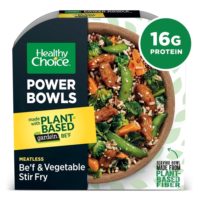Conagra Brands this week released the “Future of Frozen Foods,” a first-of-its kind report from the food giant, in partnership with sales data from NielsenIQ, in-home consumption behaviors from Circana's National Eating Trends, and in-depth social media trend predictors from Black Swan Data.
The 23-page report identifies five key areas in which manufacturers, processors, suppliers and retailers can find success in the $78 billion U.S. frozen food market.
The U.S. is the largest market for frozen food, with eight in 10 Americans eating frozen food at least once per week, according to the report. Post-COVID, the research found over 50% of U.S. households have a second freezer.
"The frozen food industry, which began with our own Clarence Birdseye over a century ago, will continue to evolve with product innovation, flavor experimentation and changes to how and when people want to enjoy frozen food," said Bob Nolan, senior vice president of demand science at Conagra Brands. "Unlike conventional consumer surveys or online polls, we leveraged our Demand Science team to dive deep into data and other insights, unearthing tastes and experiences for the year ahead."
The research identified five key areas for 2024:
-
Global Cuisine
Indian flavors, Cajun cuisine and Asian appetizers are among the highlights in the frozen aisle reflecting the expanding offerings in the $600 million category. Frozen foods allow people to try new foods that can be challenging too cook at home from a skill and ingredient perspective. “We’ve seen countless Cajun cuisine recipes going viral. We think this one has a lot of legs and we’ll see really cool innovation in the frozen aisle,” said Megan Bullock, director of Predictive Science at Conagra.
-
Breakfast on the Rise
Sales of handhelds and on-the-go breakfast items continue to shine in the morning, with frozen allowing consumers to balance carbohydrates and proteins, something that is harder to accomplish in a shelf-stable product, Nolan said. “Over 80% of breakfasts are prepared in less than five minutes,” he said. “People want something that is quick and on-the-go.”
-
Prioritizing Portions
Frozen small bites and minis represent over $1 billion in frozen food sales, as nearly half of U.S. consumers are eating three or more snacks daily, up 8% in the past two years, according to the report. As social media trends like “girl dinner” on TikTok to growing searches for everything from mini potpies to mini meatloaves, there is the potential for big sales in small packages.
-
Kids’ Meals
The segment represents $248-million in sales, as parents seek options that are easy to prepare, nutritious and please finicky eaters. Another trend to watch is the gamification of food packaging for children and appealing to parents with easy messaging highlighting nutritional benefits and preparation instructions.
-
Air Fryer’s Influence
The report found that 63% of households own an air fryer, up 27% from 2020, continuing to influence product development, recipe formulation and packaging. Air fryers are perceived as healthier with the ability to deliver “restaurant quality” food at home. “We’re seeing huge growth in products that are specifically giving air fryer instructions to the consumer,” Nolan said.
Other highlights include a look at generational shopping habits: Gen X is 13% more like to purchase frozen food than the average consumer. And research into top category drivers, with desserts, seafood and fully-cooked meals outpacing growth.
Among the largest food companies in the world, Conagra represents over 100 brands, with 18,000 employees and $12+ billion in revenue last year.




